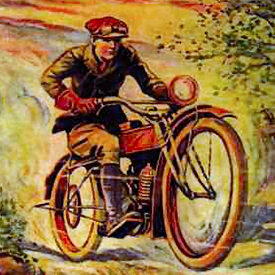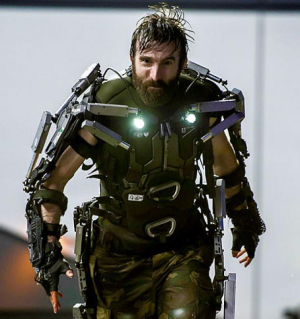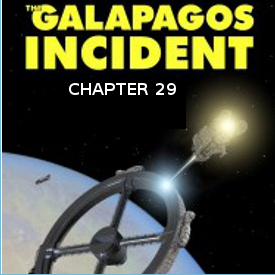
I’m back—I used the last two weeks to get a start on my next book, which is a sequel to my first book (Tom Smith and His Electric Skyship), which I wrote over a weekend as part of the “3-Day Novel Competition” a few years ago. It was a YA book, as the sequel—Tom Smith and His Electric Time Velocipede—will be. I’ll let you know how the writing’s going from time to time. Figure 1 is from the cover of “Victor Appleton’s” Tom Swift book, Tom Swift and His Motor-Cycle (1910); if you’re of a certain age, you’d probably guess that my series’ hero is named in honour of that almost forgotten character, who mostly lives on now because of “Tom Swifties,” a classic style of bad writing—I hope my books don’t contain any! These books were published by the Edward Stratemeyer syndicate, and according to the web page dedicated to him (https://stratemeyer.org/), there were 38 in the Grosset & Dunlap series, all but three ghostwritten by Howard R. Garis, from 1910 to 1935.
I would dearly love to have seen the new Poltergeist movie so I could review that with the tag line “I’m back,” but that didn’t happen. Oh, well. This week I review an SF movie; a very good one, called Chappie. It’s from South Africa’s Neill Blomkamp, who gave us District 9 and Elysium, both featuring Sharlto Copley (although Matt Damon was the star of Elysium).
Now I don’t claim that District 9 was a world-beating SF movie, but it was good SF, and it had an unique point of view. It was hard SF mixed with sociological SF; the CGI was excellent and I thought Copley did a good job as the poor, incompetent schmuck who is transformed into an alien. (According to a comment on IMDB, “In South Africa, the last name ‘van der Merwe’ really is a fairly common surname (it, like many Afrikaans names, comes from the Dutch), but it would also be recognizable to most South Africans as the common name in a whole genre of jokes about stupid, bumbling, oblivious, or incompetent Afrikaaners. The fact that the Wikus van der Merwe character is (at least at the beginning of the film) an ineffectual, catastrophically clueless bureaucrat is immediately communicated by the screenwriters’ decision to give him that particular name.”)

That little tidbit escaped most of us non-Afrikaaners, I’ll bet, but Sharlto Copley sold the character. Now, the idea of ghettoization is hardly new to written SF; often, though, it’s humans who are in the ghetto. So District 9, echoing as it did the treatment of South African blacks by the former white minority (for you younger readers, it was called “apartheid,” or “keeping them apart from us.”), was groundbreaking in a minor way in SF film. (Interestingly enough, the slum filmed as the “prawns’” ghetto is an actual slum that was going to be razed to make room for more modern upscale housing, according to IMDB. Art echoes life, which helps to make more art, I guess.) Copley, who said (again, according to IMDB) he didn’t set out to become an actor, was cast because he was a close friend of Blomkamp.

Then came Elysium—again, nothing really groundbreaking in this one; in fact, if you remember the Star Trek episode (original series) episode “The Cloud Minders,” based on a story by David Gerrold and Oliver Crawford (1969), in which there is a great class disparity between those who live in a floating city in the clouds, and those who mine the ore that keeps that city floating. It’s likewise a class struggle in Elysium between those who toil on the ground and those who live in a giant habitat (technically a Dyson sphere, though it’s not really a sphere) that looks like Larry Niven’s Ringworld, high above the Earth in what one assumes is a stable LaGrange point. The wealthiest people in the world live off the actual Earth, which is played out—only the lowest-class survivors live there, and they are heavily policed (another echo of apartheid, I think). The wealthy have superscience “Med Beds” that can, apparently, cure anything short of physical death. Matt Damon is the protagonist who, through a series of accidents, is forced to take on the task of getting someone he loves to a Med Bed, even though we are shown that Elysium, the habitat—under the direction of Jodie Foster—blows up any ship of refugees attempting to land there. Copley is a mercenary hired to make sure Damon doesn’t succeed. Although the movie is heavy-handed and makes little sense scientifically—you can argue points endlessly, and the IMDB comments go on for pages—it still succeeds in a minor way as metaphor, even though the points (the haves vs. the have-nots) are nothing new. Visually, however, like all Blomkamp’s movies, it more than succeeds. (Well, maybe except for the exoskeletons—see Figure 3—which are similar to what Tom Cruise uses later in Edge of Tomorrow; I seriously question how useful those would be in a firefight. I’m still waiting for someone to come out with the Heinlein-described “power suits” from the written version of Starship Troopers. Those I could believe; these not so much.)
Blomkamp’s third major movie—and again, the visuals are just about perfect, which makes sense, given that he graduated from the Vancouver Film School’s 3D Animation and Visual Effects program in 1998—is about the world’s first true AI. It’s called Chappie, and it came out a couple of months ago, then kinda sank out of view. Critics, by and large, disliked it. I had mixed feelings about whether to see it—something about the ad put me off—until William Gibson gave it a good recommendation, and when Gibson tells me a movie is worth watching, I pay attention. So here’s my review:

Capsule Review: Chappie, by Neill Blomkamp (2015)
At the beginning of the movie we learn that Johannesburg, South Africa, is a dangerous place; a voiceover or a TV reporter tells us that there are 300 murders a day. Fortunately, Tetravaal, a company run by Michelle Bradley (Sigourney Weaver) has a solution: replace real cops with robot cops that have a limited AI. They can’t be corrupted or hacked (there is a single hardware key that keeps them honest; without the key their programming can’t be changed), and the Johannesburg police deploy a bunch of them. Their developer, Deon Wilson (Dev Patel), isn’t happy—he wants to create a robot with a real, independent AI; he’s been working at home and in his off hours to create one, but Bradley won’t have it—she thinks a real AI might be a rival to humankind, plus she only wants to sell robots to the cops. Wilson also has a rival in Tetravaal: ex-soldier Vincent Moore (Hugh Jackman), who’s built—and is trying to sell to the police—a giant remote human-controlled robot reminiscent of ED-209 in Robocop (figure 5). But the police like the ones Deon is working on, and order another 100 of them.

The police robots are called “Scouts,” but one of them, Scout 22, has a real problem; he keeps getting beaten up. On one trip back to the factory, he has a broken antenna (they look like rabbit ears [courtesy of a manga, Appleseed, that Blomkamp likes] that gets replaced—the cops are all blue-black, but the prototypes are red-coloured—with a prototype antenna, as that’s what’s handy. (At one point, Deon explains that the robots are designed with “plug and play” parts, courtesy, one expects, of Windows’ design.) Later, while attacking a group of drug dealers, Scout 22 takes an RPG (Rocket-Propelled Grenade) to the chest plate, which fuses his battery to the plate in such a way that it can’t be replaced; the decision is made to salvage the CPU and scrap the rest of the robot.
Deon has just been turned down by Bradley in his bid to get Scout 22, which would be destroyed anyway, as the test subject for the AI he has just created at home, but decides to steal it anyway and install his AI software—so he steals the hardware key and Scout 22, plus a few spare parts, and takes them home. But there’s a problem: on the way home, he’s hijacked by several amateur drug-dealers led by Ninja (Ninja Visser). Ninja and his cohorts, Yolandi (Yo-Landi Visser) and Amerika (Jose Pablo Cantillo) have seen Deon interviewed on TV, so they know who he is, and they want his remote.

“His remote?”you ask? Yeah, you see, these people are not the brightest bulbs—far from it. They figure that, since the police robots are machines, they must have a remote control that turns them off, like the TV and the stereo, and the guy who builds them probably has it. (Ninja’s gang needs to pull a heist of 200 million Rand (about $20M dollars) because they screwed up a drug delivery and owe 20 million Rand to Hippo. They were all mixed up in that same raid that injured Scout 22, by the way.) They know they can’t pull a heist with police robots everywhere, and so figure to turn them all off remotely.
Deon—with a gun to his head—manages to convince Ninja and crew that there is no magic remote, but his robot could possibly be of use to them. He installs the AI in the damaged Scout, but like a newborn, it doesn’t understand English (because it’s an American movie, they all speak English instead of Afrikaans, I guess). Yolandi says it’s a cute little chappie, and so names it Chappie. Deon tells Ninja that it will have to learn like a child, and makes Ninja promise to let him, Deon, come back and tutor Chappie. Yolandi begins to teach him like a child, and Ninja begins to teach him how to be a “Number One Gangster Robot!”
From here things start to go seriously wrong for Deon, for Ninja and Yolandi and, most assuredly for Moore and Bradley. For a fuller description with spoilers, read the spoiler review. Did I like it? Yes, with a few reservations: first, the setup was slow—as a science fiction reader, I can go with it, but it could have been tighter. Secondly, Act Three—described in the spoiler review—was more than a bit bloody, and therefore not really accessible to younger viewers. I think it could have been toned down. But overall, Sharlto Copley’s performance (it was a form of motion capture) as Chappie was very good, as were his vocals; you followed his transformation from newborn to full, self-aware AI very nicely. And the whole “gangsta” business was kind of a new and unique twist to AI stories like Short Circuit or even A.I. (Spielberg).
MINOR SPOILER REVIEW OF CHAPPIE
One problem I had with the movie was that there were a number of skipped steps in Chappie’s education: he seemed to understand a number of things too early, but maybe that was a necessity in a movie; there isn’t time to explore the whole learning process. Certainly, it was fun watching him learning how to walk the gangsta walk and talk the gangsta talk to the great consternation of his Maker, Deon. (“I’m your maker, Chappie. You must respect me!”)
Moore (Jackman) despises Deon, not the least because Deon’s Scouts are diverting attention and resources from his own project, Moose. Moore has a helmet (a neural analyzer) wired to a big sort of VR console, with which he’s able to control Moose; Chappie, in fits and starts here and there; mostly in a visit to the factory to get a “spare” body—that of the prototype Scout—finds out about this helmet and figures out how to use it to copy his own neurological profile.
I’m not describing the whole movie; that’s not my purpose—I want to hit the highlights and tell you why you should watch it. There’s a big, bloody fight between Moore’s Moose and Chappie, Ninja and Yolandi, with Deon being caught in the middle, and a surprising revelation about the transfer of intelligence, artificial or not. I won’t spoil the whole movie, but aside from being a bit rushed, it makes sense in context of the film.
I read a number of comments on IMDB regarding the various actors’ limitations, which I’m not sure I agree with. Granted, none of the actors, whether Patel (known mostly for the movie Slumdog Millionaire), Jackman (Wolverine, et al.), Weaver (Alien, etc.) or the two main “gangsta” actors, Visser and Visser will win any Oscars for these performances. (The Vissers in real life form the rap group “Die Antwoord,” which is Afrikaans for “The Answer”—see https://www.youtube.com/watch?v=HcXNPI-IPPM at 3:57 [Caution: NSFW!] to see her wearing the same T-Shirt she wears in much of this movie. They do, in my view, a credible job as two wannabe gangsta dumbasses. In the end, one gets a kind of sympathy for Yolandi’s character, who isn’t so much mean as clueless.) Jackman’s character Moore gets his comeuppance, and Deon learns much more about hardware and software than he’d ever planned.
QUICK REVIEW: SUPERGIRL (TV SERIES PILOT)

I had an opportunity to view the pilot of the upcoming DC Comics’ series (November, I believe) Supergirl, featuring Melissa Benoist (Glee) as Kal-El’s cousin (you all know who he is, I hope) Kara Zor-El. According to the voice-over at the beginning of the episode—by the way, like other TV and movie comic adaptations, this series takes giant liberties with canon—Kara was, at 13 years old (apparently a year on Krypton is the same as a year on Earth) sent right after Kal-El was, to “keep him safe.” And then, the dang planet blew up! Who knew that was gonna happen? The shockwave from Krypton’s explosion threw Kara’s little spaceship into the Phantom Zone (“a region in space where time does not pass”), and it remained there for something like 24 years, while she did not age and her cousin grew up on Earth. (At no point is his name, or his character name, ever mentioned.) Then, for some reason, her little spaceship left the Phantom Zone and continued to Earth, where she was taken in by the Danvers family (father played momentarily by Dean Cain—in-joke!) and became foster sister to their older daughter.
Then, because Earth already had a protector in wosisname, who’s never named, she apparently decided to forgo using any of her powers, but grew up to be a gofer at a media company run by Cat Grant (Callista Flockheart, not at all like Ally McBeal!), until a prison ship, apparently sucked out of the Phantom Zone by Kara’s little ship, lands on Earth and disgorges hundreds of alien criminals. And so on, and so on. As I said, great liberties with canon—even her name; in the comics, her “secret identity” name is Linda Danvers; in the show, her name is Kara Danvers. And Jimmy—sorry, only two people call him Jimmy, and one is Super… uh, that guy—James Olsen is over 6 feet tall. And black. With a shaved head. Played by Mehcad Brooks, who’s apparently making quite a name for himself on TV. The whole character is different, not just his race. Not that I care about race, it’s just startling and not at all like the comic.
I won’t go into great detail here about the pilot; I thought it was very weak, overall—but I feel I must mention that Melissa Benoist is, whether playing Kara Danvers or Supergirl, quite appealing. There’s a freshness and an honesty to her. The writing is terrible, in my opinion, and not very believable, and the effects are a bit weak, even for TV. But who knows? The Flash developed very nicely towards the end of the season, and that’s also a DC character. (My favourite TV superhero right now is Daredevil on Netflix. If you haven’t seen Season 1, I recommend it highly.) So I’ll wait until I’ve seen a few more episodes before I condemn it.
I’d appreciate any comment on this week’s column. You can register here and comment (if you haven’t already registered); or you can comment on my Facebook page, or in the several Facebook groups where I publish a link to this column. All comments are welcome, whether you agree with me or not. And, hey—I’m not infallible, and don’t pretend to be—my opinion is, as always, my own, and doesn’t necessarily reflect the views of Amazing Stories or its owners, editors, publishers or other bloggers. See you next week!











Recent Comments